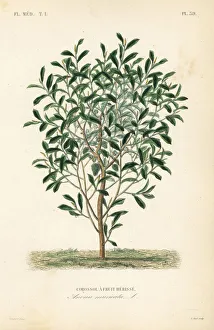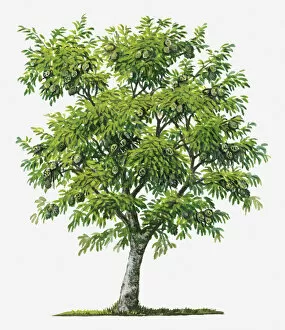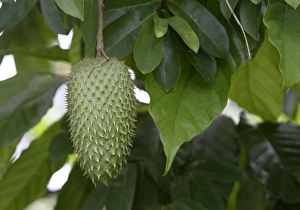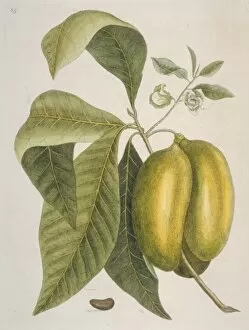Soursop Collection
Soursop, scientifically known as Annona muricata, is a tropical fruit native to Trinidad and Tobago in the West Indies
All Professionally Made to Order for Quick Shipping
Soursop, scientifically known as Annona muricata, is a tropical fruit native to Trinidad and Tobago in the West Indies. This exotic fruit, also called graviola or guyabano, grows on the soursop tree which is commonly found in this region. The Colonial and Indian Exhibition held in British Guiana showcased the beauty and significance of this fruit through engravings. With its evergreen leaves and green fruits covered in thorny spikes, soursop stands out among other plants. Its unique appearance has made it a subject of interest for botany enthusiasts worldwide. In 1857, an engraving captured the essence fruit with intricate details that highlighted its allure. The taste is equally captivating as its appearance. Whole and sliced guanabana (soursop) placed on a white background offers a close-up view that entices anyone who lays eyes on it. The juicy flesh inside these fruits is both creamy and tangy, making them perfect for refreshing beverages or delectable desserts. Apart from being delicious, soursop holds cultural significance too. Soursop seeds are often used creatively as necklaces by locals to showcase their love for this cherished fruit. Guanabana (soursop) fruits are not only enjoyed for their flavor but also valued for their potential health benefits. Rich in vitamins and antioxidants, consuming soursop may contribute to overall well-being. Whether you admire its botanical beauty or relish its delightful taste, there's no denying that soursop holds a special place within Caribbean culture and beyond. So next time you come across this tropical gem at your local market or during your travels, be sure to indulge yourself in all that it has to offer.














